
A lavabo towel is a cloth linen or sort of hand towel that is used to dry the hands of a person who is performing a lavabo ceremony. It is one of several small altar linens or church linen items. the lavabo towel must be a pristine white church linen cloth as it symbolizes the purification that occurs as a result of the lavabo ceremony.
Like this:
Like Loading...
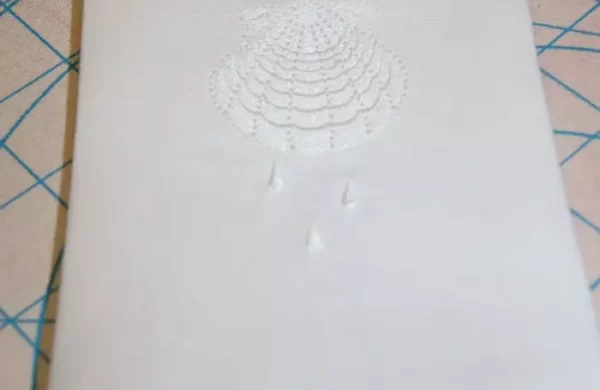
As a special reminder of their baptism day when they receive the washing of rebirth in Holy Baptism, we have created these special little keepsake baptismal towels.
Like this:
Like Loading...
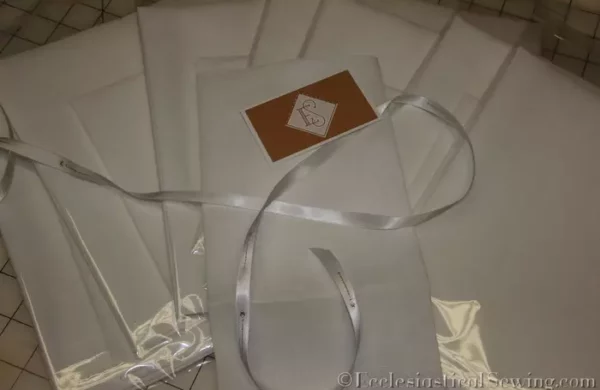
Altar linens are often overlooked but essential. Regular checks for stains, tears, and faded colors are crucial. Making altar linens is a cost-effective option, offering flexibility in design and size. Renaissance Linen, a medium-weight Irish Linen, and Opalescent Linen, a fine sheer fabric, are excellent choices available at Ecclesiastical Sewing.
Like this:
Like Loading...
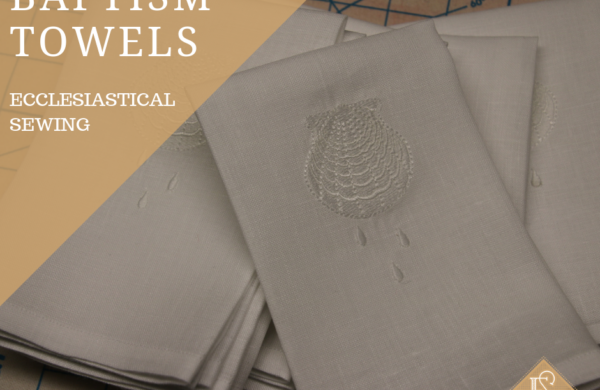
Prepare for fall by reviewing altar linens, checking inventory, and tidying storage. Examine baptismal items, altar hangings, server gowns, and clergy vestments. Ensure everything is in good condition, make repairs if needed, and consider replacements for worn-out items. Keep the Lord’s house well-maintained and ready for worship.
Like this:
Like Loading...
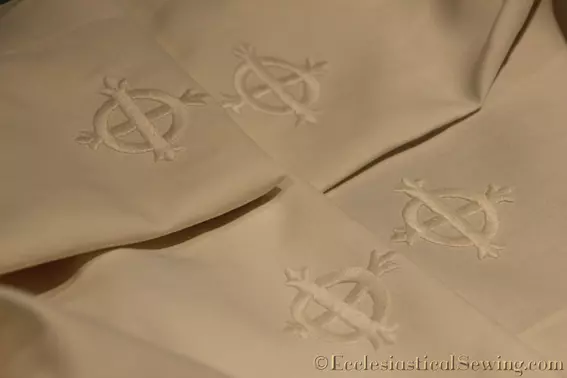
A scrollwork cross. The cross is a creation taken from part of the vintage embroidery designs. This cross is similar to many vintage hand embroidery designs. Satin stitch would be nice around the center diamond shape and the four dots just outside of that. The Scrollwork could be an outline or stem stitch or trailing stitch. The tiny tendrils could be back-stitched or a small stem stitch. The three clover shapes at the cross ends could be stem stitched and filled with seed stitch or satin stitched. The very center of the large diamond could also be filled with seed stitches. It would take only about 3 or 4 stitches to work this little design up.
Like this:
Like Loading...
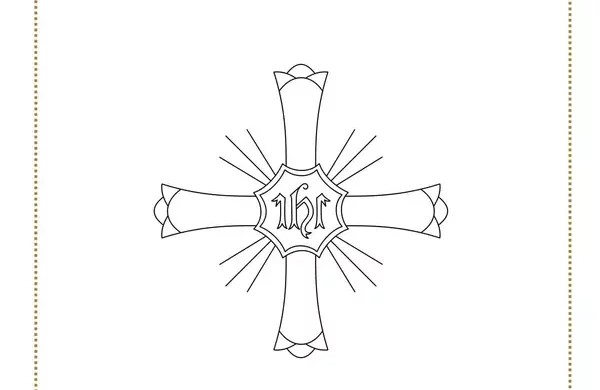
This is a pre-cut keep sake baptismal towel that is intended to be given to the parents of a newly baptized infant. For an older child or an adult, one might select to embroider a purificator or lavabo-sized linen. This towel is small so that one gets used to the concepts of turning up linen hems and mitering corners without having to stitch long hems at the beginning.
Like this:
Like Loading...
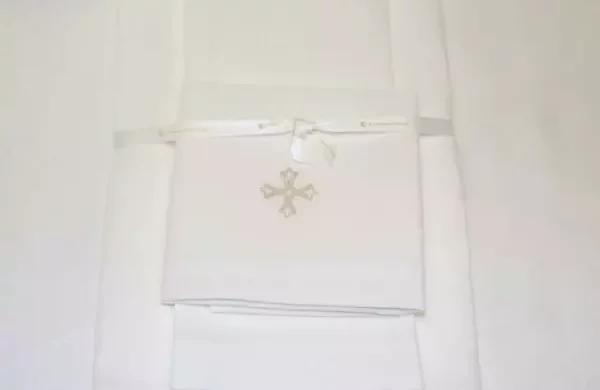
Linens are an item used every day or every week in the life of most churches. Linens are used for the most sacred and important part of a church service during the service of Holy Communion or the Eucharist. The small church linens or altar linens used in the Divine Service are the Fairlinen which is placed directly on the altar, the corporal, the lavabo towel, and the purificator. Some churches use a small side table that is covered by a Credence cloth.
Like this:
Like Loading...
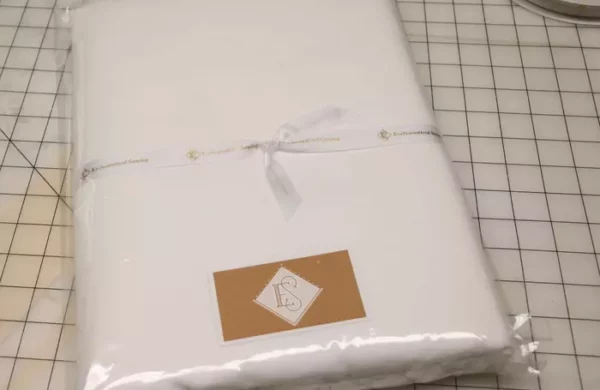
Renaissance Altar Linen – 100% Irish Linen fabric, which is 60″ wide. It feels like a vintage altar linens as it has similar weight and weave. This linen has a nice hand and body and presses well. Small altar linens and altar Fairlinens are made from this pristine white Irish Linen fabric.
Like this:
Like Loading...

Before the Renaissance, the corporal was often as big as an altar cloth. Since then, it has had smaller dimensions, depending on the size of the altar. It remains essentially a corporal as long as it holds the chalice, the paten, the host, and the ciborium cover. As the corporal is a simple cloth that has the honor of holding the Eucharist, it needs little decoration to complete its job
Like this:
Like Loading...
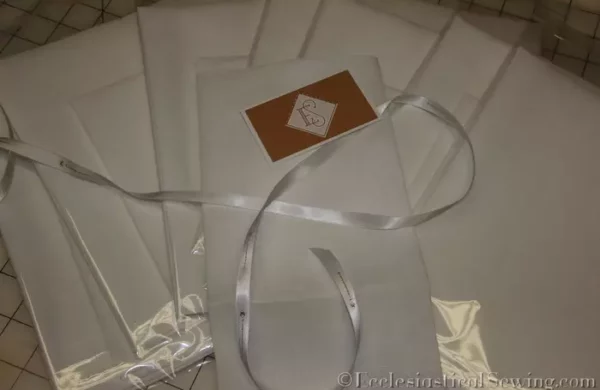
Fine linen fabrics are the first step to review when considering making new altar linens for your church. At Ecclesiastical Sewing, we offer an assortment of fine linens, knowing that one linen does not suit all needs.
Like this:
Like Loading...

The amice is the first garment to be put on by a priest. It is worn on the head, while he offers up prayers and intercessions, and then he continues to dress. After the alb is put on, the amice is pushed off his head and worn around his neck as a collar. The long cords of the amice are then tied around the alb under the arms, crossed around the back, and brought back to the front to be tied. All this being said, there are instances when the amice is kept upon the head for practical reasons: such as warmth during a processional or in a particularly drafty church.
Like this:
Like Loading...

Fair Linens are hand hemmed with a simple slip stitch worked in even tiny stitches. The quality of the hand hemming is determined by the number of stitches made in each inch of length, as well as the evenness of the stitching. To aid in obtaining even, tiny stitches, use a single strand of fine cotton thread such as YLI Heirloom Thread which is a 100/2 size, or a similar fine sewing thread.
Like this:
Like Loading...
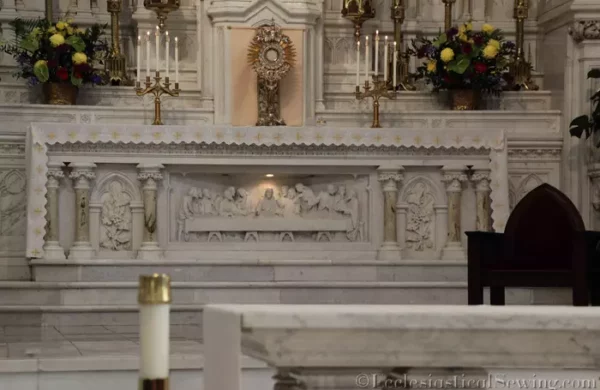
The measurement of making an Altar Fair Linen – The altar height: measure from the top edge of the altar to the floor. Measure the width of the altar from the front to the back. Measure the length of the altar from one side to the opposite side. Optional: measure the hang from the top edge down the side of the Fair Linen to match the length of an altar hanging.
Like this:
Like Loading...
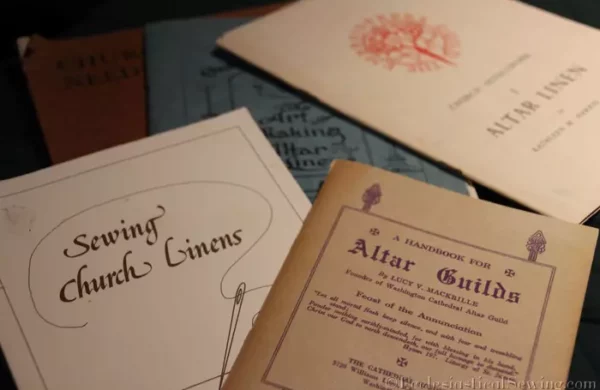
Altar linens serve distinct liturgical functions: Fair Linen covers the altar, Corporal holds vessels, Pall a square linen stiffened with either cardboard or plexiglass. Purificator a small square linen used to wipe the communion vessels during the sacrament, Lavabo Towel dries hands, Credence Cloth covers a side table, Chalice Veil conceals post-communion, Cere Cloth protects from dampness, Dust Cloth safeguards Fair Linen, and Sick Call Set facilitates individual communion.
Like this:
Like Loading...
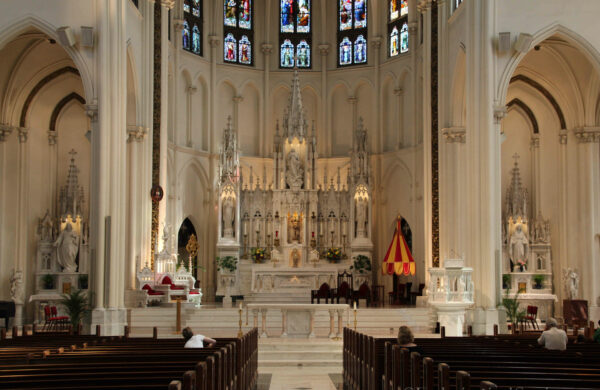
The altar in the Mary Chapel allows a closer view of the altar linen. The edge of the linen is cut so that it hangs over the front of the altar by a few inches. This linen edge is embroidered using the colors of white and gold. There is so much white inside this Basilica. The gold provides a much-needed contrast so the altar linen is not lost among all of the other whites of the chapel. The design motifs of the altar linen feature a cross worked in gold embroidery thread, and a wheat and grape motif worked in white embroidery thread. The edge of the altar linen is scalloped with a scalloped or shell satin stitch, making a perfect complement to this lovely Basilica
Like this:
Like Loading...
















You must be logged in to post a comment.